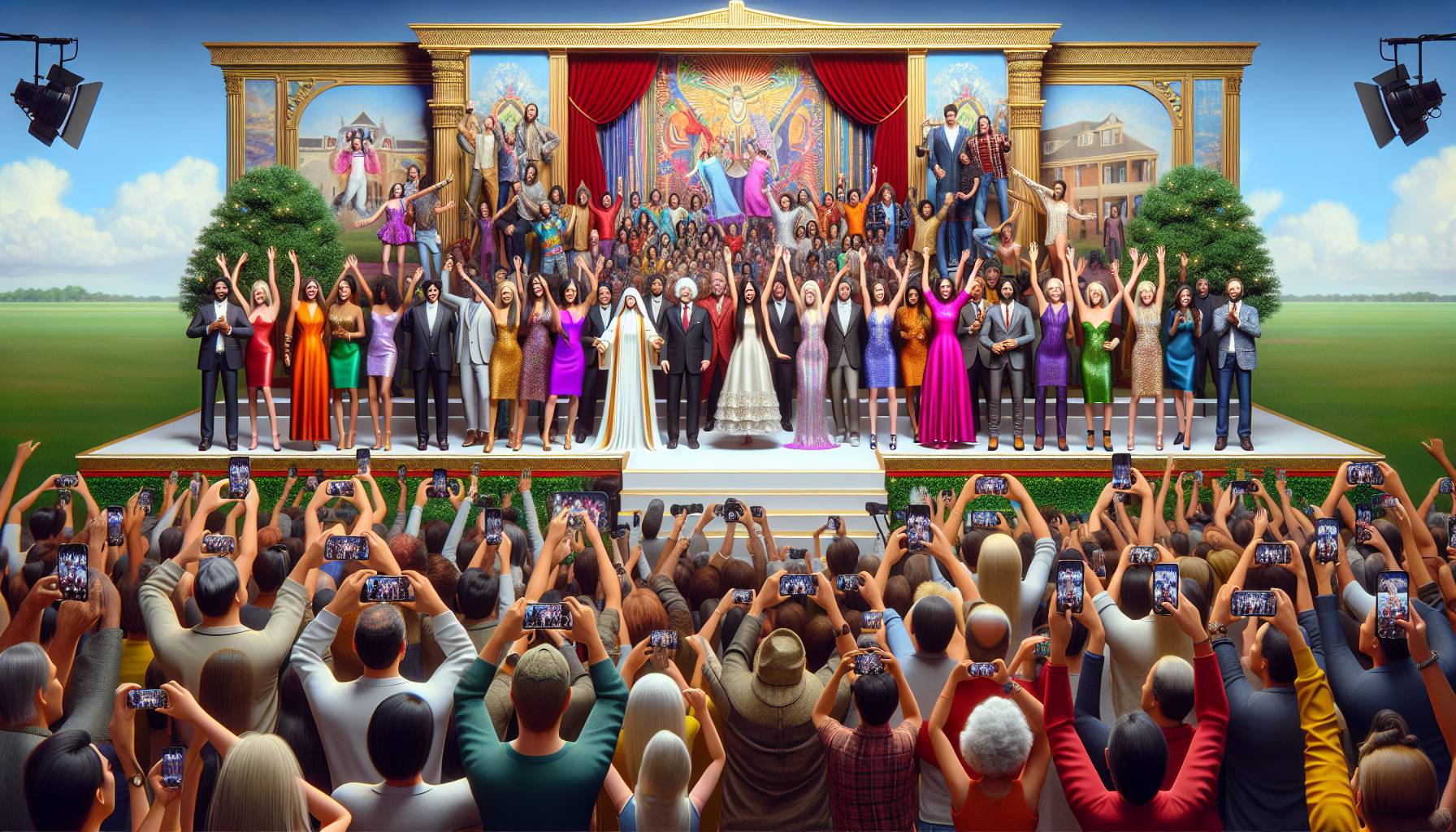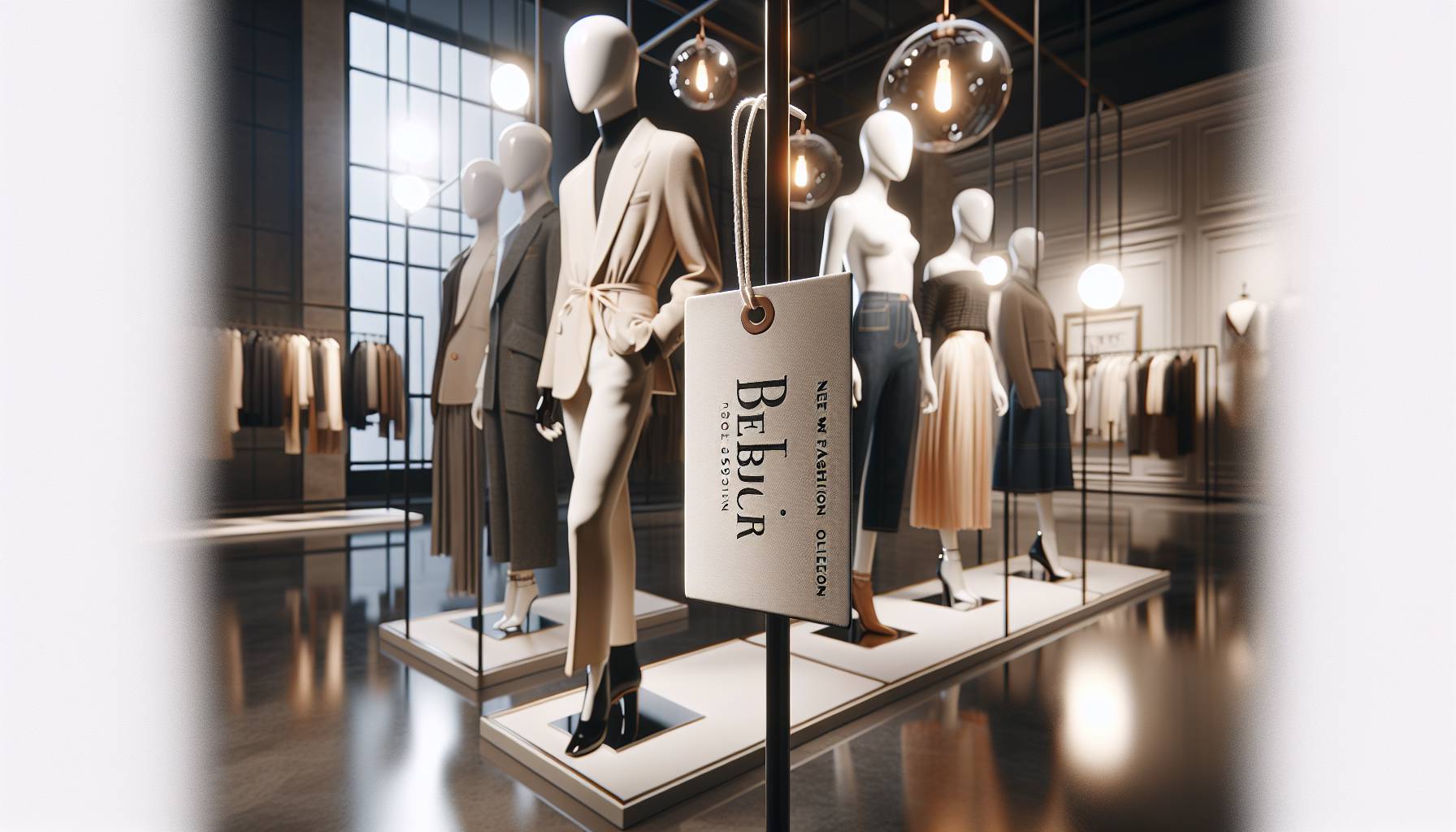Exhibition overview
Carnegie Mellon University’s student-run gallery, The Frame, has reopened its doors with a striking new exhibition titled The Clothes Make the Man. This solo showcase presents the latest work of BXA senior Lillian van Veen, whose innovative approach to art and design has captivated both the campus and broader Pittsburgh community. The exhibition transforms the gallery space into an immersive environment, inviting visitors to explore themes of identity, transformation, and self-expression through a carefully curated selection of multimedia installations.
Upon entering the gallery, viewers are met with a series of visually arresting pieces that blend fashion, sculpture, and digital media. Each work is strategically placed to guide the audience through a narrative journey, reflecting van Veen’s exploration of how clothing and presentation shape perceptions of the self. The exhibition’s layout encourages interaction and contemplation, with open spaces that allow for both individual reflection and communal discussion.
The Frame’s minimalist architecture provides a stark yet effective backdrop for van Veen’s vibrant and texturally rich creations. Lighting plays a crucial role in the presentation, casting dramatic shadows and highlighting intricate details that might otherwise go unnoticed. The exhibition’s design underscores the conceptual depth of the work, reinforcing the idea that garments are more than mere fabric—they are vessels of meaning, memory, and identity.
With its bold visual language and thought-provoking content, The Clothes Make the Man positions The Frame as a vital platform for emerging artists and experimental practices. The exhibition not only showcases van Veen’s talent but also reaffirms the gallery’s commitment to fostering creative innovation within the university and beyond.
Artist spotlight: Lillian van Veen
Lillian van Veen, the creative force behind The Clothes Make the Man, is a senior in Carnegie Mellon’s BXA Intercollege Degree Program, which allows students to merge disciplines across the arts and sciences. Her academic path, combining visual art with psychology, informs much of her work’s conceptual depth and emotional resonance. Van Veen’s practice is rooted in a desire to interrogate the social constructs that shape identity, particularly through the lens of gender, performance, and personal narrative.
Originally from Melbourne, van Veen brings a distinctly global perspective to her work, drawing on both her Australian upbringing and her experiences in the United States. Her artistic journey began with a fascination for costume design and textile manipulation, which gradually evolved into a broader exploration of how clothing functions as a language. This evolution is evident in her current exhibition, where garments are not merely worn but deconstructed, reassembled, and reimagined as sculptural forms and storytelling devices.
Van Veen’s previous projects have included interactive installations, wearable art, and performance-based pieces, often blurring the boundaries between creator and audience. Her work has been featured in student showcases and local art events, but The Clothes Make the Man marks her most ambitious solo exhibition to date. It reflects a maturation of her artistic voice, one that is both deeply personal and socially engaged.
In interviews and artist statements, van Veen often cites influences ranging from queer theory and drag culture to the writings of Judith Butler and the visual aesthetics of avant-garde fashion designers. These inspirations manifest in her use of unconventional materials—such as latex, mesh, and recycled textiles—and in her commitment to challenging normative ideas of beauty and identity. Her pieces are not only visually compelling but also intellectually rigorous, inviting viewers to question their own assumptions about self-presentation and authenticity.
As she prepares to graduate, van Veen is already looking ahead to future projects that will continue to push the boundaries of interdisciplinary art. Her work at The Frame serves as both a culmination of her undergraduate studies and a launching pad for a promising career in contemporary art. With a unique voice and a fearless approach to experimentation, Lillian van Veen is poised to make a significant impact on the international art scene.
Multidisciplinary approach and visitor experience
Visitors to The Clothes Make the Man are immediately immersed in a sensory-rich environment that challenges traditional notions of gallery engagement. Van Veen’s multidisciplinary approach fuses sculpture, fashion, video, and sound into a cohesive yet unpredictable experience. Each installation invites the audience to not only observe but to participate—whether by walking through textile-based structures, listening to layered audio narratives, or interacting with motion-sensitive projections that respond to their presence.
The exhibition’s centrepiece, a suspended garment constructed from translucent mesh and embedded with LED lights, shifts in colour and intensity as viewers move around it. This dynamic interplay between viewer and artwork underscores van Veen’s interest in performativity and the fluidity of identity. The piece acts as both a mirror and a mask, reflecting the viewer’s movements while simultaneously obscuring the figure beneath layers of light and fabric.
Throughout the gallery, van Veen employs unconventional materials—ranging from industrial plastics to repurposed clothing—to create tactile contrasts that provoke curiosity and invite closer inspection. These material juxtapositions are not merely aesthetic choices; they serve to question the hierarchies of value and meaning we assign to objects and appearances. In one corner, a video loop plays footage of van Veen donning and shedding various costumes, each transformation accompanied by a shifting soundscape that blends ambient noise with spoken word fragments. The effect is both intimate and disorienting, drawing the viewer into a dialogue about the performative nature of identity.
Audience reactions have been notably varied, with some visitors lingering for extended periods to absorb the layered narratives, while others engage in spontaneous discussions sparked by the provocative visuals. The open layout of The Frame encourages this kind of communal interaction, with seating areas and reflective surfaces strategically placed to foster conversation and contemplation. For many, the exhibition becomes a space not just for viewing art, but for confronting personal and cultural assumptions about gender, selfhood, and the politics of appearance.
Van Veen’s use of multimedia also extends to accessibility, with QR codes placed throughout the gallery linking to audio descriptions, artist commentary, and behind-the-scenes footage of the creative process. This digital integration enhances the visitor experience, offering multiple entry points into the work and ensuring that the exhibition remains inclusive and engaging for a diverse audience.
Ultimately, the multidisciplinary nature of The Clothes Make the Man transforms The Frame into more than a gallery—it becomes a living, breathing installation that evolves with each visitor’s presence. Van Veen’s ability to weave together disparate media into a unified, emotionally resonant experience speaks to her strength as a storyteller and her commitment to pushing the boundaries of contemporary art practice.
Exhibition overview
With a bold curatorial vision, “The Clothes Make the Man” transforms The Frame gallery into a tactile, immersive experience that challenges traditional fashion narratives. Lillian van Veen’s solo exhibition is a masterclass in multidisciplinary storytelling, where garments are not merely worn but inhabited—each piece a sculptural statement layered with meaning.
The gallery space pulses with energy, as van Veen’s works blur the lines between fashion, performance, and installation. Textiles are manipulated into exaggerated silhouettes, stitched with intention and subversion. The exhibition invites viewers to consider how clothing constructs identity, particularly through a gendered lens, and how fabric can be both armour and vulnerability.
Visitors are drawn into a curated journey that feels both intimate and theatrical. From oversized tailoring to deconstructed corsetry, van Veen’s pieces speak to a postmodern aesthetic that is both cerebral and emotionally resonant. The use of mixed media—ranging from found objects to digital projections—adds layers of complexity, making each ensemble a conversation between past and future, self and society.
For the fashion-forward Australian audience, this exhibition resonates with the current global shift toward conceptual fashion and gender-fluid design. It’s a compelling reminder that clothing is never neutral—it’s a language, and van Veen is fluent in its most avant-garde dialects.
Artist profile: Lillian van Veen
Lillian van Veen is a name to watch in the global fashion-art conversation. A senior in Carnegie Mellon University’s BXA Interdisciplinary Program, van Veen fuses fine art, design, and performance into a singular creative voice that’s both fearless and deeply personal. Her practice is rooted in experimentation, often beginning with unconventional materials and evolving into sculptural garments that defy categorisation.
Originally from the Netherlands, van Veen brings a European sensibility to her work—think conceptual rigour with a punk edge. Her pieces are not designed for the runway but for the gallery, the street, and the stage. Each look is a provocation, challenging the viewer to reconsider the function of fashion in shaping identity and social norms. There’s a rawness to her aesthetic that feels especially relevant to the Australian fashion scene, where authenticity and innovation are prized over polish.
Her creative process is as layered as her garments. Van Veen often begins with a narrative—sometimes autobiographical, sometimes drawn from cultural critique—and builds her pieces as visual essays. She incorporates found materials, recycled textiles, and digital elements, creating a hybrid language that speaks to sustainability, gender politics, and the body as a site of resistance.
“I’m interested in how clothing can be both a mask and a mirror,” van Veen has said in past interviews. “It’s about constructing and deconstructing identity—sometimes within the same stitch.”
For Australian fashion creatives and collectors, van Veen’s work offers a refreshing departure from commercial trends. Her garments are not about wearability in the traditional sense—they’re about presence, performance, and provocation. It’s fashion as installation, as protest, as poetry. And in a market increasingly hungry for meaning and narrative, her voice feels not only timely but necessary.

